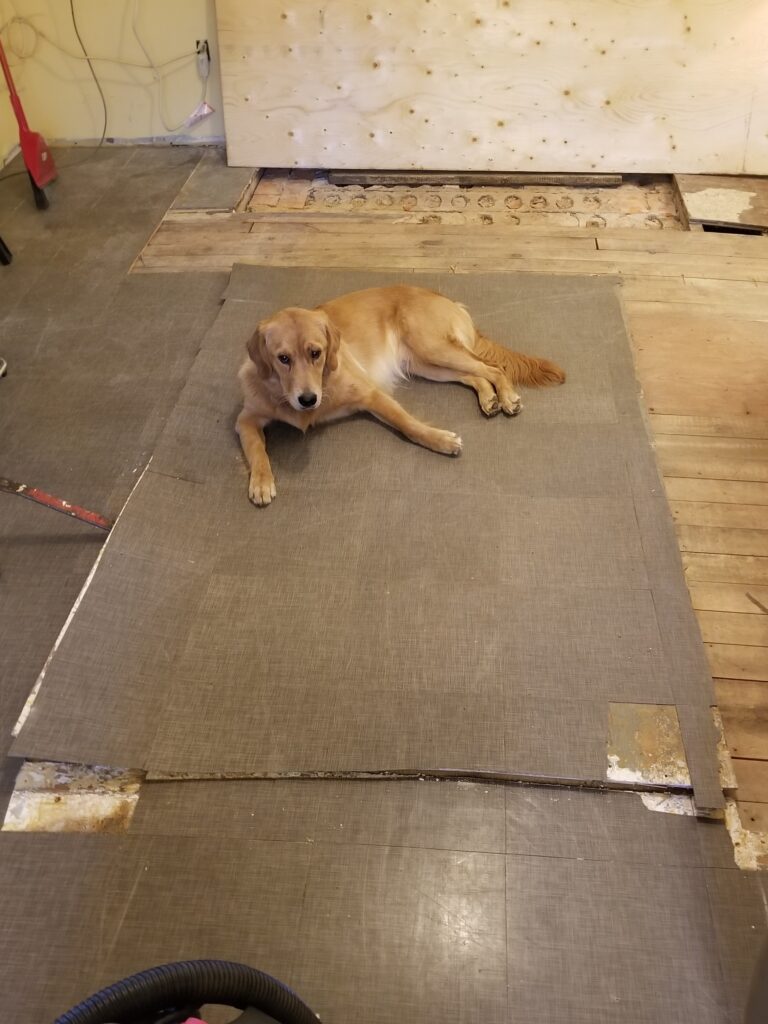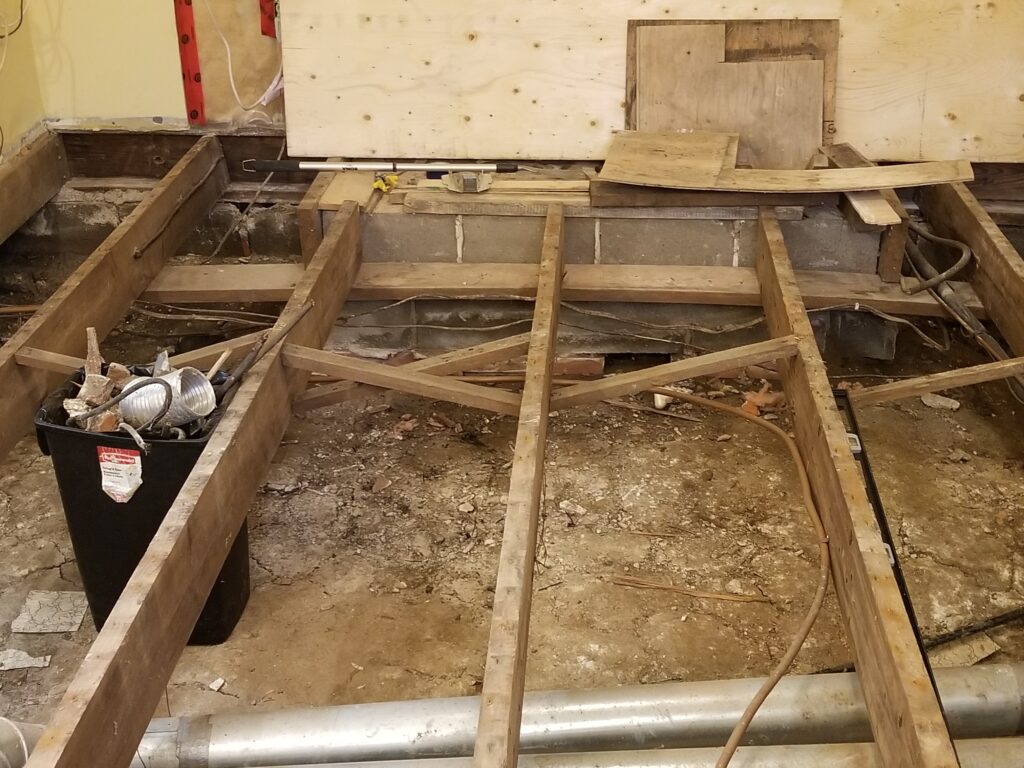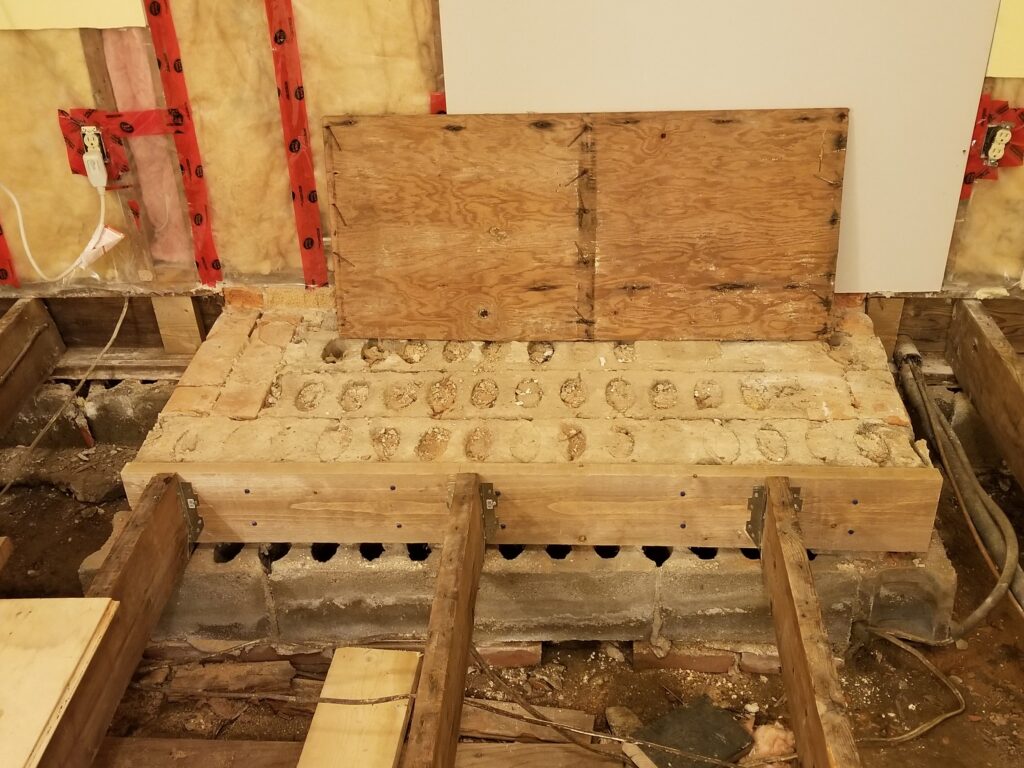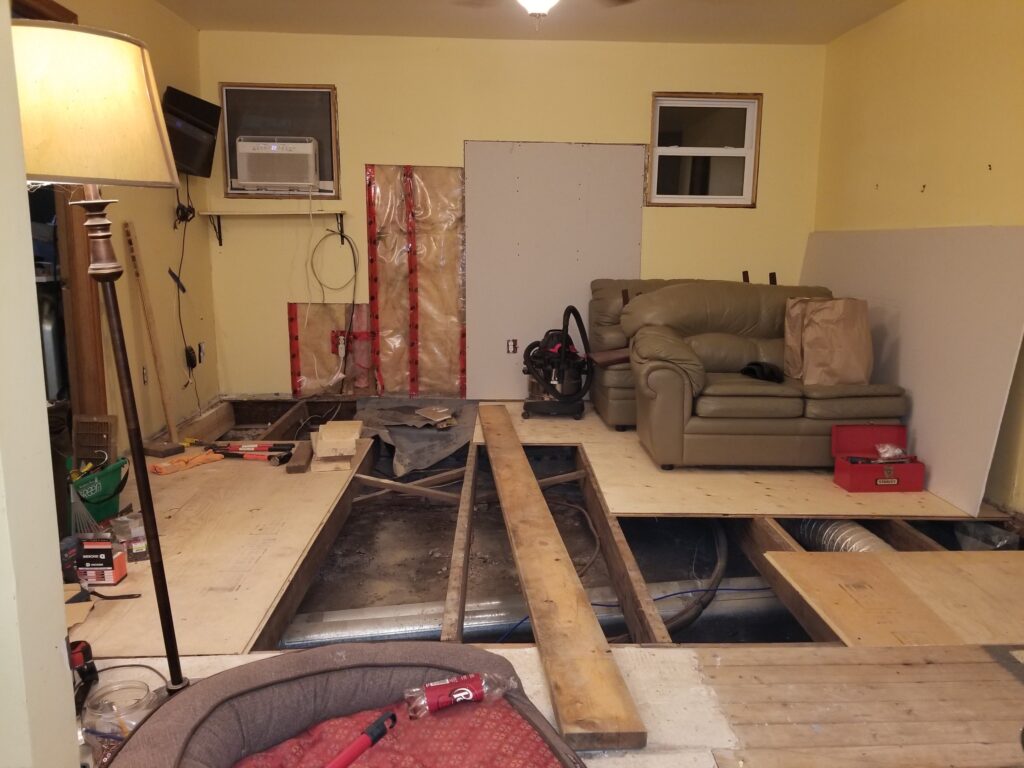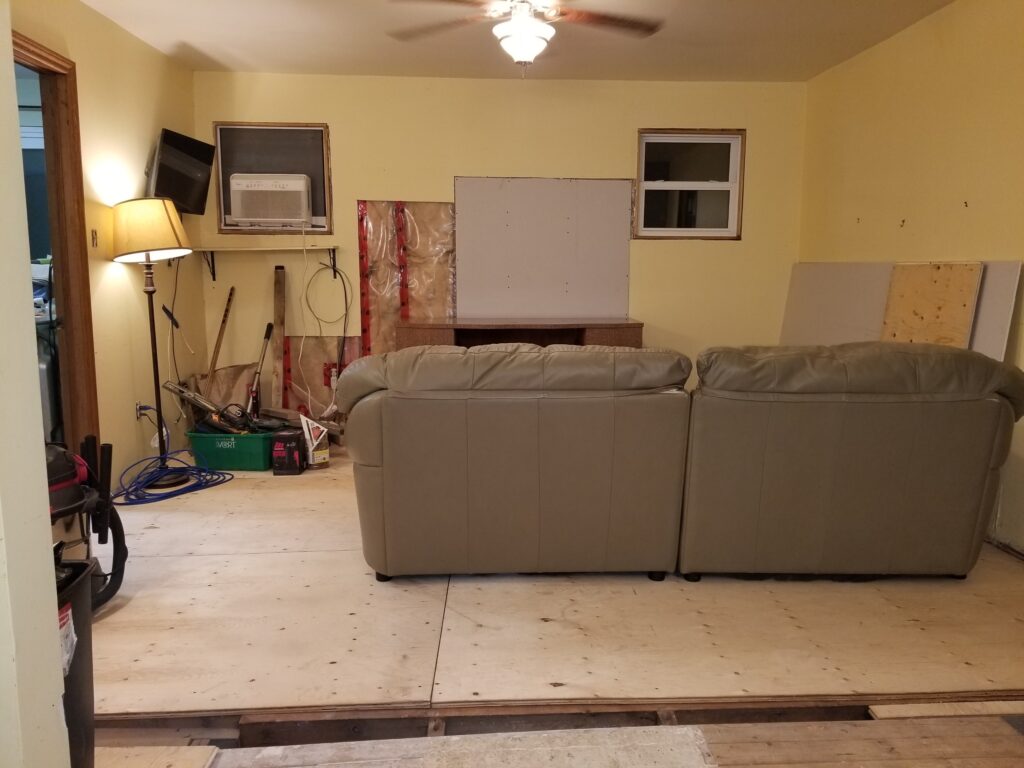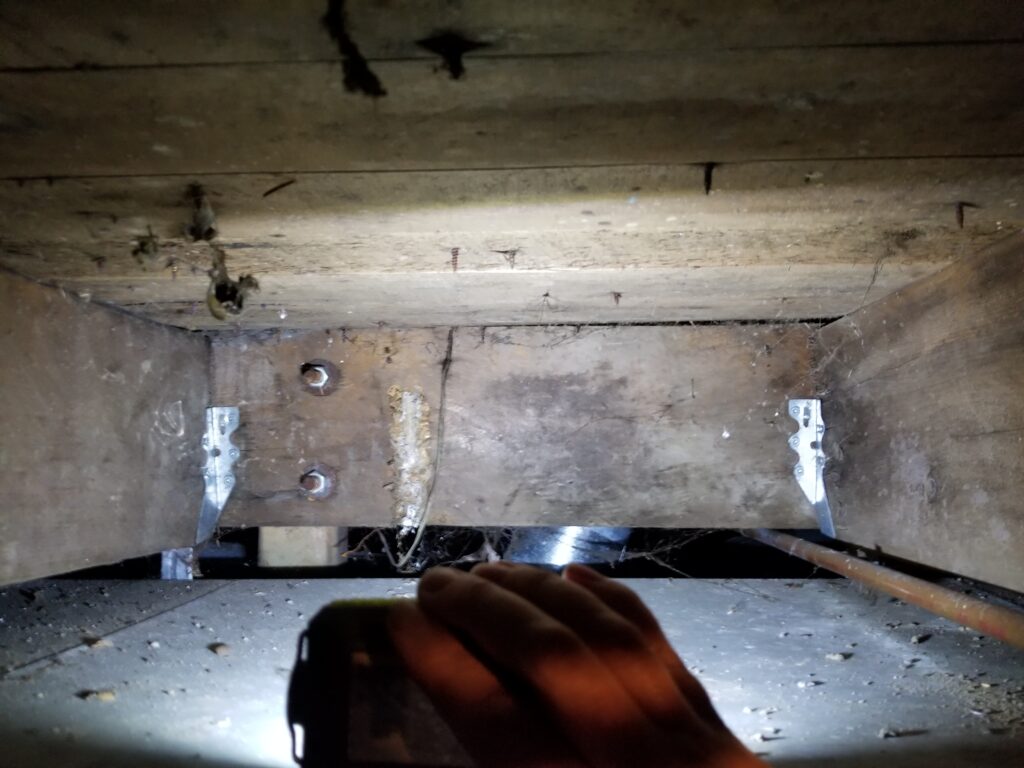With the back half of my living room floor flat and hump free, it was time to tackle the really big project – the front half. For the front half I didn’t have to rip up as much sub-floor so it was less disruptive for day to day life. But the issues in the front half took more time and work to resolve.
Why the Floor Dropped
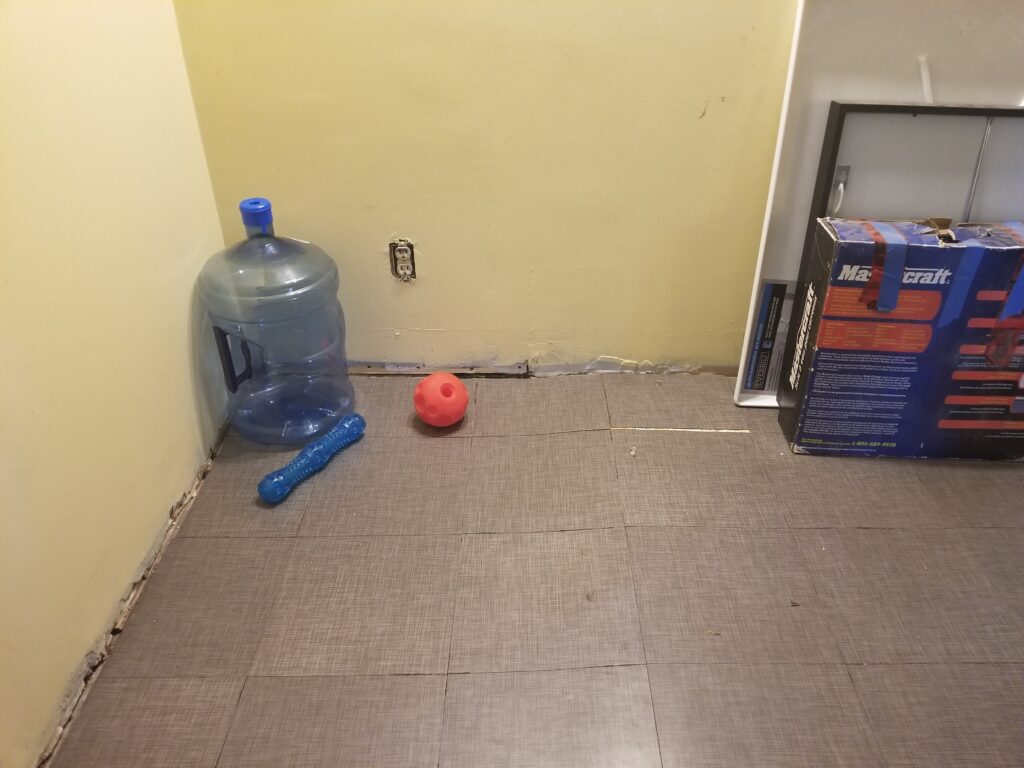 Looking at the picture above under the 3rd tile seam from the left is the main beam for my house. The wall to the left is the main load bearing wall in my house. That wall should have been built over the beam. I am using the term “beam” loosely because it’s actually just three 2 x 6 of random lengths nailed together. Over time, the weight of the roof pushing down on floor joists caused the joists to deflect and the beam to start separating.
Looking at the picture above under the 3rd tile seam from the left is the main beam for my house. The wall to the left is the main load bearing wall in my house. That wall should have been built over the beam. I am using the term “beam” loosely because it’s actually just three 2 x 6 of random lengths nailed together. Over time, the weight of the roof pushing down on floor joists caused the joists to deflect and the beam to start separating.
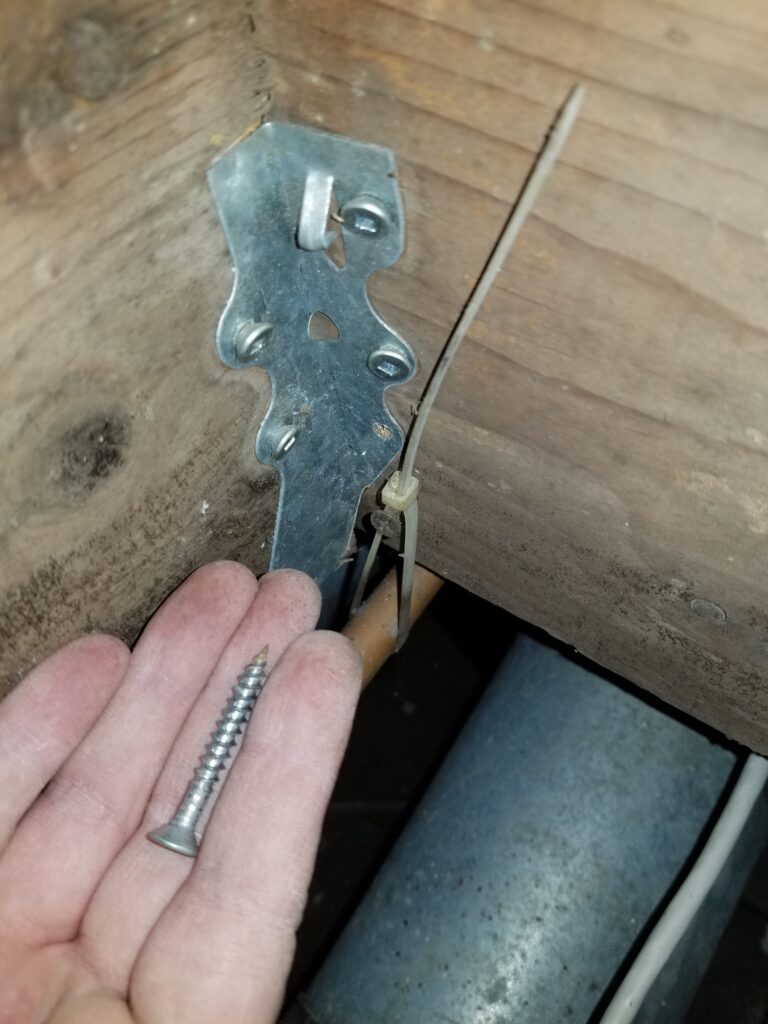
Making the project more complicated, there is a lot of plumbing going on in the front half of my crawlspace along with my furnace. In the end none of what I did would meet any building code. It didn’t meet code before either. Instead I had to take comfort that all of my work was additions to the support of my house, not subtractions. Also the 20 or so 1-1/4″ common screws that held up the center of my house have been replaced with the appropriate fasteners. I added a beam under the main load bearing wall. I laminated three 2 x 6 together for the beam and jack posts to support it.
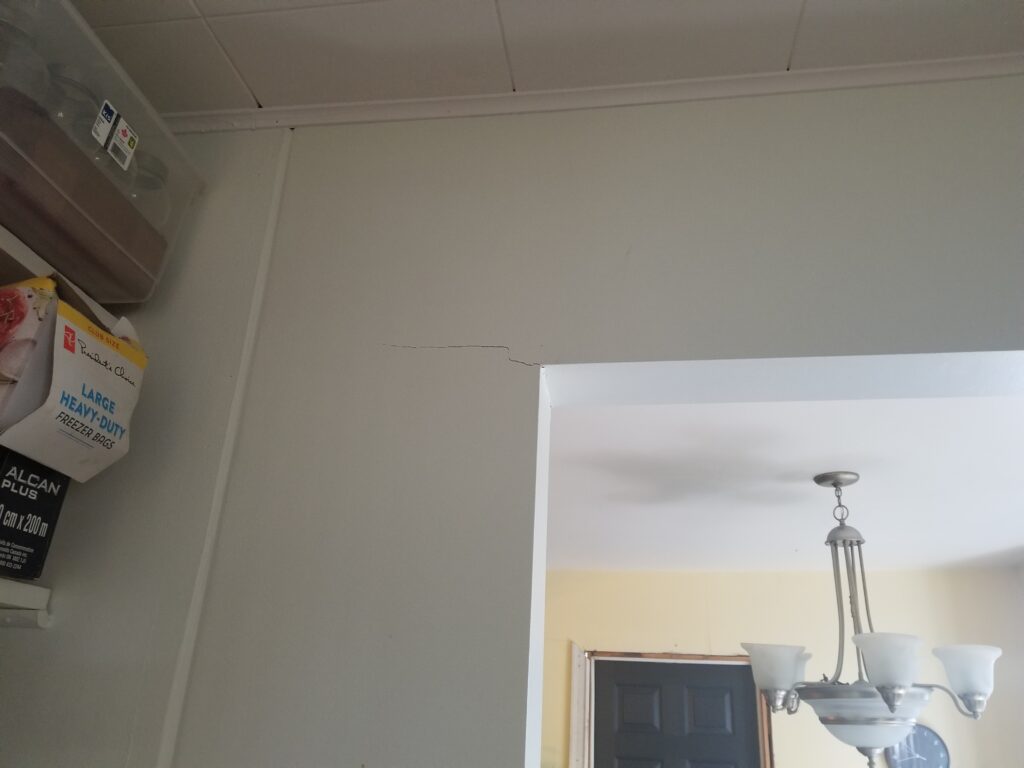 Then I added a double floor joist under the doorway so it’s no longer held up just by subfloor.
Then I added a double floor joist under the doorway so it’s no longer held up just by subfloor.
Wrapping it up
Hat’s off to the DIY bloggers who can carry out big projects like this and blog them as they are happening, because I’m not one of them. Crawling around under my house with bottle jacks was one of the most stressful things I have ever done. Doing it while living in the house just ramped the stress up even more. At some point I started referring to the crawlspace as downstairs and the living space as upstairs.
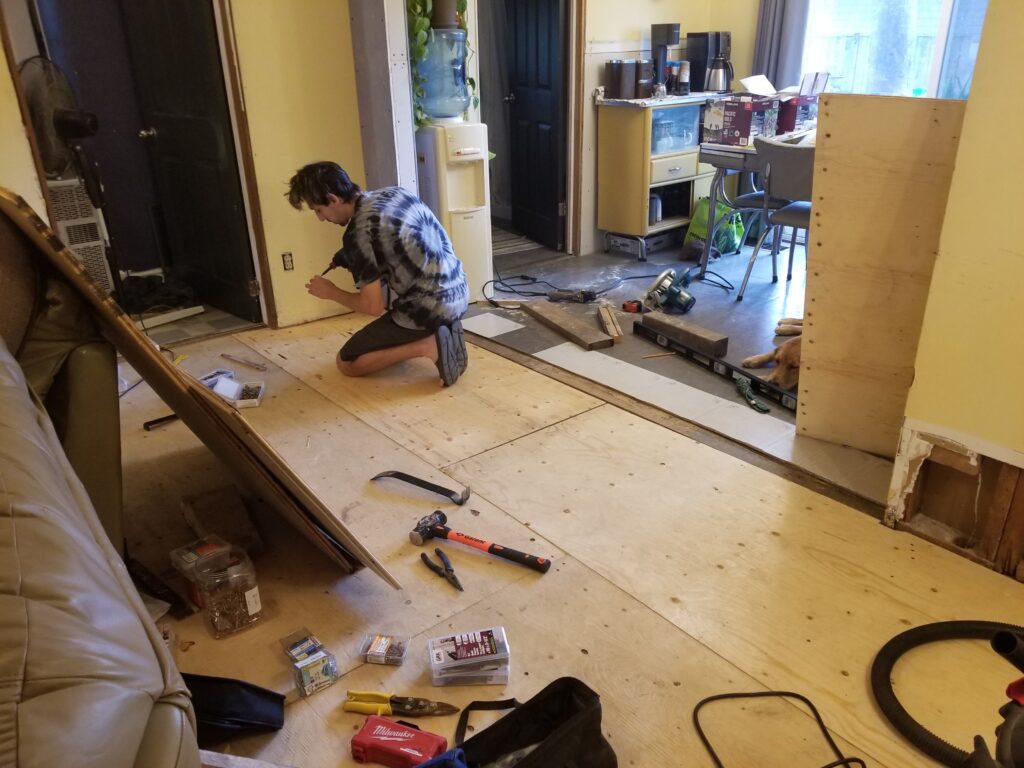

I do have a picture of my youngest screwing down the final piece of new subfloor. My favorite tool is that mini sledgehammer with the orange handle. Her name is Bertha.
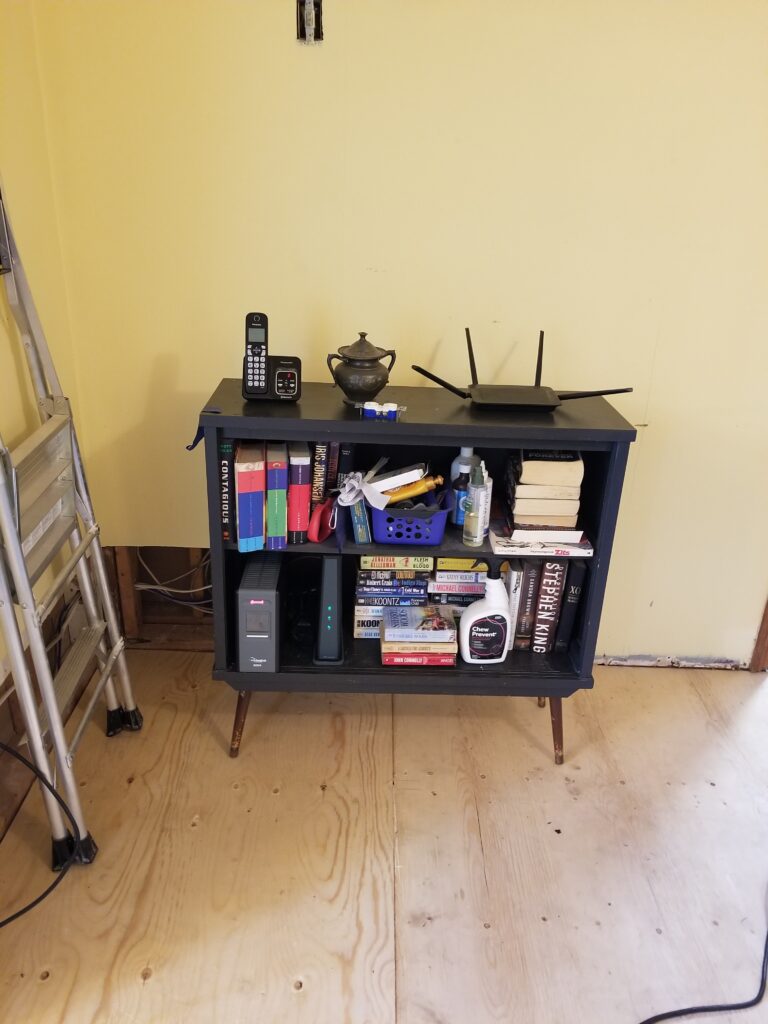

Plus I have this picture. Placing furniture in this location without having to adjust the legs used to be unfathomable. Yet here is a book shelf sitting directly on my new sub floor AND sitting level. Is the living room floor perfectly level now? No it’s not, but I did manage to achieve flat enough for flooring and I’m good with that.

